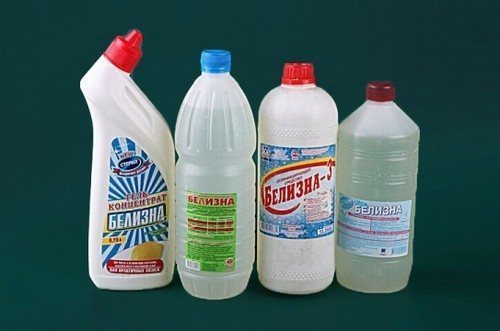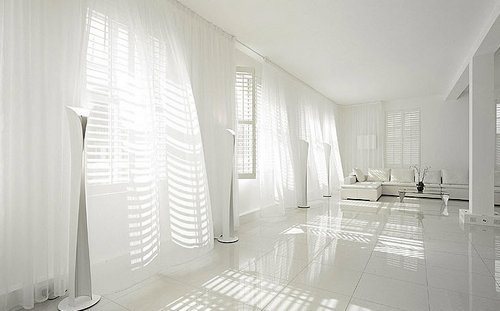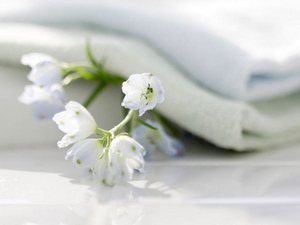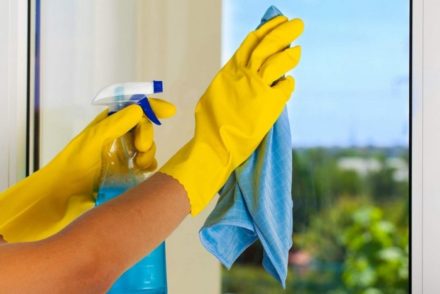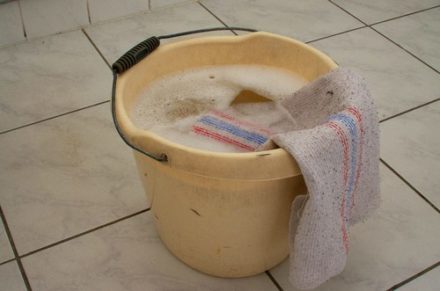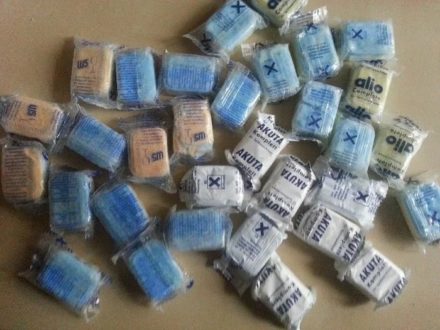Whiteness is the most budget-friendly bleach produced domestically. It is used for washing and disinfecting surfaces. Cheapness and a wide range of applications have allowed the product to firmly occupy a niche on retail shelves.
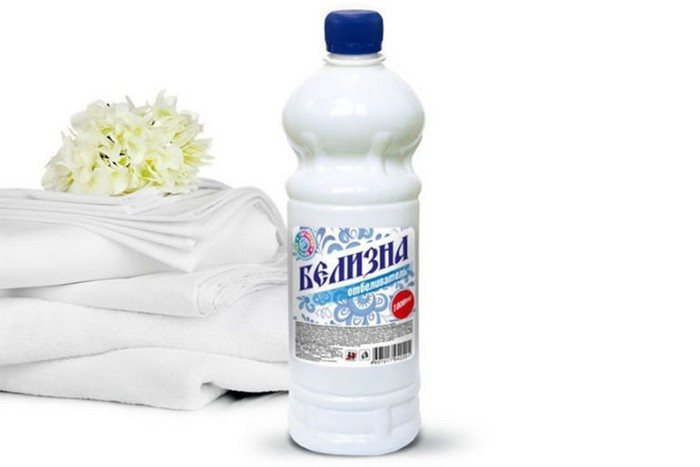
- Chemical composition
- Release form
- Liquid aqueous solution
- Gel consistency
- In powder form
- Tablet
- The difference between “Whiteness” and “Chlorine”
- Advantages and disadvantages
- Application
- At home
- For the purpose of disinfection
- For whitening things
- Plumbing cleaning
- To combat fungus and mold
- To remove blockages in pipes
- For clothing design (creating drawings on clothes)
- If there are animals in the house
- For cleaning the aquarium
- In industry
- In medicine
- In agriculture and on the site
- Answers to frequently asked questions
- Approximate consumption table
- When not recommended for use
- Storing sodium hypochlorite
- Safety instructions
- Popular manufacturers
- Harm to human health and first aid
- In case of vapor poisoning
- In case of contact with mucous membranes or skin
- What can be replaced
Chemical composition
Whiteness is a compound of potassium salts of hydrochloric and hypochlorous acid. The chemical composition of bleach includes:
- water;
- sodium hypochlorite containing 95% active forms of chlorine;
- caustic soda or sodium hydroxide;
- surfactants that do not break down into ions;
- flavors and fragrances.
Sodium hypochlorite or sodium hypochlorite is a caustic substance used as a disinfectant. It is used as a bacteriostatic and sterilizing agent, which also has bleaching properties.
Caustic soda, sodium hydroxide or caustic soda is a caustic compound used to clean heavily soiled surfaces. If safety precautions are not followed, it will cause severe burns.
Nonionic surfactants are used as detergent components that prevent static electrification of synthetic materials.
Release form
The commercial sale of Whiteness is carried out in 4 forms:
- in liquid form;
- in gel form;
- in powder form;
- in tablet form.
Depending on the form of release, the cost of the product varies. The difference in release forms is based on the target function and ease of use of the product.
Liquid aqueous solution
The liquid product is used to bleach natural fiber fabrics, wash floors, and clean white porcelain and earthenware. Sold in white or translucent plastic bottles or canisters with a screw cap of 1-5 liters.
Gel consistency
The gel variety is intended for washing plumbing fixtures and enamel bathtubs. A denser structure ensures the removal of rust and stubborn stains. Available in bottles with an extended dispenser, equipped with safety caps. The container volume is 0.5-1 l.
In powder form
The powder form is characterized by the absence of chloride compounds in the composition.It is suitable for use in washing machines as an additional product. Adding Whiteness to washing powder reduces its consumption, increasing the effectiveness of stain removal. Available in cardboard and plastic boxes. The powder variety is a cheap analogue of Vanish stain remover.
Tablet
The tablet form of the product is used for washing fabrics, sanitizing surfaces and disinfecting equipment. Available in 2 versions: with and without chlorine. Without chlorine it is used as a disinfectant, with chlorine it is used exclusively as a bleach. Sold in plastic tubes with a hinged or screw cap.
The difference between “Whiteness” and “Chlorine”
According to GOST regulations, the composition of Whiteness includes water, sodium hypochlorite 5-15%, sodium hydroxide 5%, surfactant 5% and fragrances. Chlorine formula includes hypochlorite, calcium chloride and calcium hydroxide. The mixture is more caustic and is used for technical purposes.
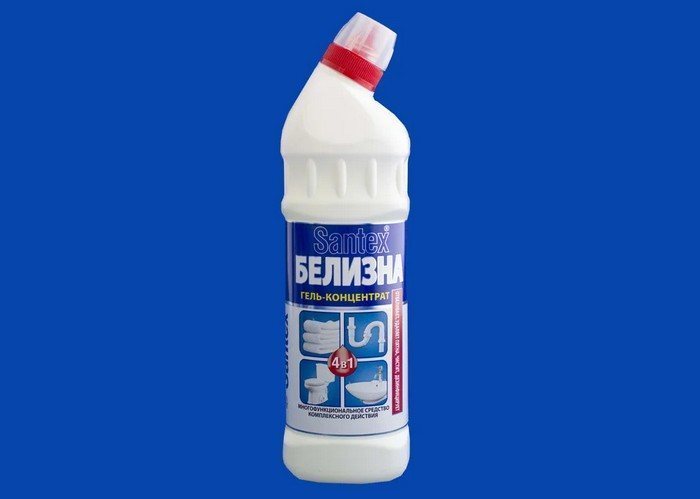
Advantages and disadvantages
The popularity of Whiteness is ensured by the following advantages:
- low cost;
- high efficiency for local removal of contaminants;
- economical consumption;
- variety of commercial forms;
- wide range of uses;
- Possibility of use in cold water;
- Possibility of application to surfaces with a spray gun;
- preservation of properties after freezing.
The disadvantages of the product include:
- lack of measuring containers in the set;
- rapid consumption of non-concentrated products;
- clogging and leaking lids;
- impossibility of using colored fabrics, wool products and artificial fibers for washing;
- presence of a strong chlorine odor;
- aggressive effect on the skin of the hands and mucous membranes.
Application
The composition of Whiteness allows it to be widely used in households, medical institutions, and industrial production. The product acts as a bactericidal agent, bleach, solution for disinfection and surface treatment.
At home
The wide range of possibilities for using Whiteness at home knows no bounds. It is used for cleaning and disinfecting surfaces, bleaching and decorating things, treating household items, and cleaning pet habitats. In addition, Whiteness helps in the fight against mold and is necessary for routine disinfection.
For the purpose of disinfection
Using chlorine bleach allows for thorough wet cleaning. Frequently used objects and surfaces are subject to treatment. The whiteness should be diluted 2 times and thoroughly irrigated with kitchen appliances, walls and floors, leaving for 2-3 hours. After time, items should be rinsed with plenty of water.
For whitening things
Whitening things is one of the main uses of Whiteness. It can only be used with cotton or linen fabrics in light shades. Use with colored or synthetic materials leads to fabric damage and discoloration.
The frequency of using White for bleaching things should be as little as possible, since constant use causes destruction of the fabric structure.
To maintain white color
Soaking the laundry in a White solution before the main wash helps preserve the snow-white color of products. It is necessary to dilute the product in the proportion of 1 tablespoon per 5 liters of water.The product should be soaked in the resulting solution for 20 minutes. Afterwards, rinse thoroughly and wash with your usual powder to neutralize the bleach odor.
It is possible to bleach in a washing machine. For this purpose, there should not be a manufacturer’s ban on the use of chlorine-containing products. You cannot set the maximum temperature to avoid damage to equipment and neutralize the effect of Whiteness.
To remove gray and yellow stains
You need to dilute 2 tablespoons of Whiteness in 10 liters of warm water. Place contaminated items in water and leave for 1 hour. Afterwards, rinse the items thoroughly or put them in the washing machine.
When treating dense fabrics, the concentrated product should be poured onto the contaminated area and rinsed with water after a few minutes. Prolonged use of the concentrate leads to discoloration of the material.
Plumbing cleaning
Cleaning of plumbing equipment is carried out using the gel form of Whiteness. It is necessary to distribute the gel generously over the contaminated surface and leave for 30 minutes. When cleaning the toilet, first remove as much water as possible and pour the product down the drain. It is recommended to treat complex stains with a cloth or brush. After cleansing, Whiteness should be rinsed off with plenty of water.
To combat fungus and mold
Treatment against mold and fungi is carried out with a working solution of Whiteness diluted in equal proportions. It should be poured into a spray bottle and the necessary surfaces should be treated.
Floors and walls must first be fanned with a dry cloth to mechanically remove dirt and surface contaminants. After complete drying, the Whitening treatment should be repeated.
In case of extensive damage, a concentrated product is used.
To remove blockages in pipes
Cleaning and disinfection of sewage drains is carried out with a concentrated product. It is necessary to pour 1 liter of White into the clogged drain and close it with a stopper, leaving it for 9-12 hours. After incubation, flush the pipes with a large volume of cool water.
For clothing design (creating drawings on clothes)
The non-standard use of Whiteness for clothing design is called “tai dai”. Using bleach allows you to get patterns on your clothes. This way you can dye an old T-shirt, jeans or other items of clothing made from natural materials.
The uniqueness of the patterns is achieved by a special technique of twisting things and securing them in a folded state.
For the technique, a solution of Whiteness diluted twice is used. To obtain a soft effect, it can be poured into a spray bottle. After dyeing is completed, the clothes must be washed to neutralize the effect of the bleach.
If there are animals in the house
Keeping pets is associated with increased pollution. Trays, cages and enclosures need regular treatment with disinfectants to prevent the spread of pathogenic microflora and parasites. The use of Whiteness reduces the microbial load and eliminates unpleasant odors.
It is necessary to remove all animals during disinfection and start after the treated areas have completely dried.
For cleaning trays
As risk factors for the spread of zoonotic diseases, pet litter boxes require systematic disinfection.Whiteness should be diluted in water in a ratio of 1:10 and the trays should be treated with the working solution.
If your pet went to the toilet in a place not intended for this purpose, the contamination should be treated with Whiteness diluted 20 times.
For cleaning cages and enclosures
Cages and enclosures should be disinfected twice a year as follows:
- dilute 200 ml of the product in 5 liters of water and fill a spray bottle with the resulting solution;
- generously irrigate the entire surface of the cages, corners and floors of the enclosures with the working solution;
- leave the disinfectant for 2 hours;
- Rinse treated areas generously with water or a steam generator.
For cleaning the aquarium
The vital activity of aquatic inhabitants leads to the proliferation of microflora. To neutralize it on decorative items, you need to dilute 1 liter of White in 10 liters of warm water. Decorative elements should be immersed in the prepared solution for 2-3 hours. Afterwards, you need to rinse the items thoroughly, especially paying attention to porous surfaces. A solution of White may remain in small pores and, when transferred to an aquarium, will cause harm to its inhabitants.
In industry
In industrial enterprises, Whiteness is used as a bleach and oxidizer for chemical processes. It is necessary for bleaching fabrics and woody materials. The product is used for disinfection on an industrial scale and for sanitary and hygienic treatment.
Whiteness acts as a drinking water purifier in centralized water supply systems and wastewater disinfection.
Bactericidal properties have found application in food production. Bleach is used to treat food production equipment and remove organic residues from them.
In medicine
The antiseptic properties of Whiteness have gained wide popularity in medicine. Antifungal and bactericidal action allows the product to be used for local treatments. The hypochlorite contained in the composition is active against gram-positive and gram-negative pathogenic bacteria.
For intracavitary or external use, a 0.06% solution is used. In surgery it is used for washing and draining postoperative wounds. In otorhinolaryngology - for irrigating the throat and instilling into the external auditory canal. In dermatology - as a lotion for infectious skin processes. In dentistry it is used as an irrigation antiseptic.
In agriculture and on the site
At a summer cottage, it is necessary to disinfect greenhouse structures once a year. In conditions of elevated temperature and humidity, pathogenic bacteria multiply successfully. Treating the greenhouse in the fall reduces the risk of infection of the future crop.
First you need to remove all plant remains: roots, above-ground parts, garter material. Designs and rinse with a solution of Whiteness, diluted 1:20. Afterwards rinse with running water. To avoid damage to polycarbonate coatings, it is recommended to use soft fabrics and sponges.
To flush the well, you need to dilute 500 ml of White in a bucket of water and distribute the working solution along the walls. After filling with water, the disinfectant should be added at the rate of 1 liter per ring and left for 2 days. Over time, the contents must be pumped out several times until the chlorine odor is eliminated. It is prohibited to use water until cleaning is completed.
Answers to frequently asked questions
There are many questions related to the use of Whiteness at home. Answers to the most common ones are collected and structured below.
Approximate consumption table
Depending on the purpose of use, the consumption of Whiteness varies. Less concentrated solutions are intended for delicate effects. At the same time, more concentrated solutions are used to have an aggressive effect on pathogenic microflora.
| Purpose | Consumption rate |
| Fabric bleaching | 50 g per 10 l |
| Removing stains | 50 g per 10 l |
| Washing dishes | 100 g per 1 l |
| Removing Tough Stains | 100 g per 1 l |
| Washing plumbing | 100 g per 1 l |
| Surface disinfection | 100 g per 1 l |
| Disinfection of dishes | 150 g per 1 l |
| Disinfection of garbage containers | 150 g per 1 l |
When not recommended for use
Frequent use of Whiteness is not recommended. Chlorine gas released when using the product has a negative effect on the respiratory system. In addition, chlorine-containing agents have an aggressive effect on any materials, leading to a change in their appearance and subsequent destruction.
It is not recommended to use Whiteness in the presence of children and pets. Due to their short stature, they are more susceptible to toxic fumes.
It is also not recommended to use a product that has expired or was stored in violation of safety regulations.
Storing sodium hypochlorite
Sodium hypochlorite should be stored in unheated areas with good ventilation. Neighborhood storage with organic substances, flammable substances and acids is unacceptable. If it comes into contact with dry rags, the material will spontaneously ignite. Contact and ingress of heavy metal salts must be excluded.
It is recommended to store the product at a temperature of 15-35℃. At temperatures above 35℃, active substances decompose with the release of active chlorine. A drop in temperature to -7℃ leads to crystallization of the product. Complete hardening occurs at -25℃.
It is necessary to choose a place inaccessible to children. After opening the bottle, the product remains effective for 6 months. As the expiration date approaches, the active components erode, causing the product's effectiveness to decrease.
Safety instructions
Before you start using the product, you need to protect yourself from the harmful effects of aggressive compounds. It is necessary to wear rubber gloves and a gauze or medical bandage. There should be a flow of fresh air into the room. When working with Belizna, children and pets should be removed from the premises.
When processing vertical surfaces, you need to protect your eyes with glasses from possible splashes. To avoid damage to clothing, a protective gown or unnecessary clothing should be worn. It is necessary to strictly follow the instructions for use when preparing working solutions.
To soak laundry, cover the basin with plastic wrap. When disinfecting plumbing fixtures, you need to plug the drain holes or cover the toilet lid.
Popular manufacturers
Common producers of Whiteness:
| Trade name | Manufacturer |
| Akvagel | OOO Aqualon |
| Liquid bleach | OOO Spektr |
| Liquid bleach | OOO TDK |
| Bleaching cleaning agent | TM Ofisklin |
| Belizna Oxi power | OOO Novosibirsk Household Chemicals Plant |
Harm to human health and first aid
Failure to comply with safety precautions and manufacturer's recommendations leads to injury. The product can cause harm by inhaling vapors, accidentally swallowing and getting on the skin and mucous membranes.
First aid consists of thorough sanitization of the damaged area in case of contact with the skin or taking the victim out into the fresh air. Then call an ambulance.
In case of poisoning with vapors
There are 4 stages of poisoning with Belizna vapors.
The mild stage manifests itself in the form of a sore throat, burning and watery eyes. There are no consequences of such poisoning, and the symptoms go away on their own within 24 hours. To alleviate the condition, ensure an influx of fresh air, loosen clothing that restricts breathing, and give plenty of fluids.
The average stage is characterized by the addition of a severe dry cough, a feeling of tightness in the chest area. It may be accompanied by the development of minor pulmonary edema. First aid measures are the same as for the mild stage, but an immediate call to an ambulance is required. Before the arrival of doctors, it is necessary to monitor the victim's pulse and breathing rhythm.
The severe stage includes a short-term cessation of breathing with subsequent restoration. Restored breathing is accompanied by difficulties and disturbances and requires drug treatment.Tradename
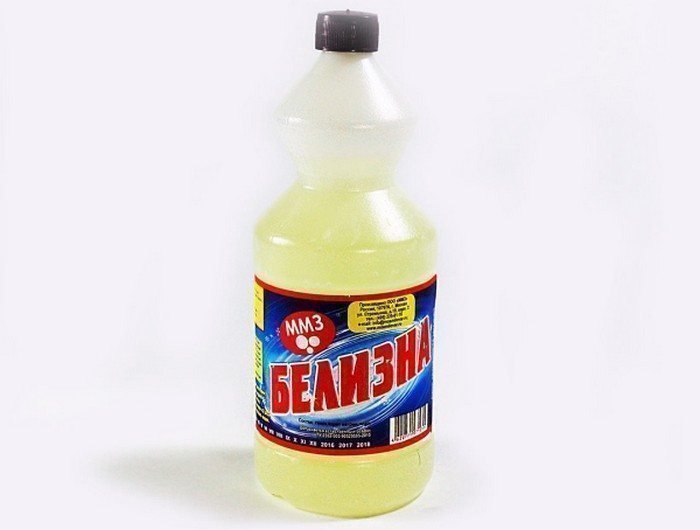
Manufacturer
Aquagel
- Aqualon LLC
- Liquid bleach
- Spectr LLC
- Liquid bleach
- LLC TDK
- Cleaning agent bleaching
- TM Ofisklin
- Belizna Oxi power
- LLC Novosibirsk Household Chemicals Plant
- Harm to human health and first aid
- Failure to comply with safety precautions and manufacturer's recommendations leads to injury. The product can cause harm through inhalation of vapors, accidental ingestion and contact with the skin and mucous membranes.
First aid consists of thoroughly sanitizing the damaged area in case of contact with the skin or removing the victim to fresh air. Then you should call an ambulance.
In case of vapor poisoning


